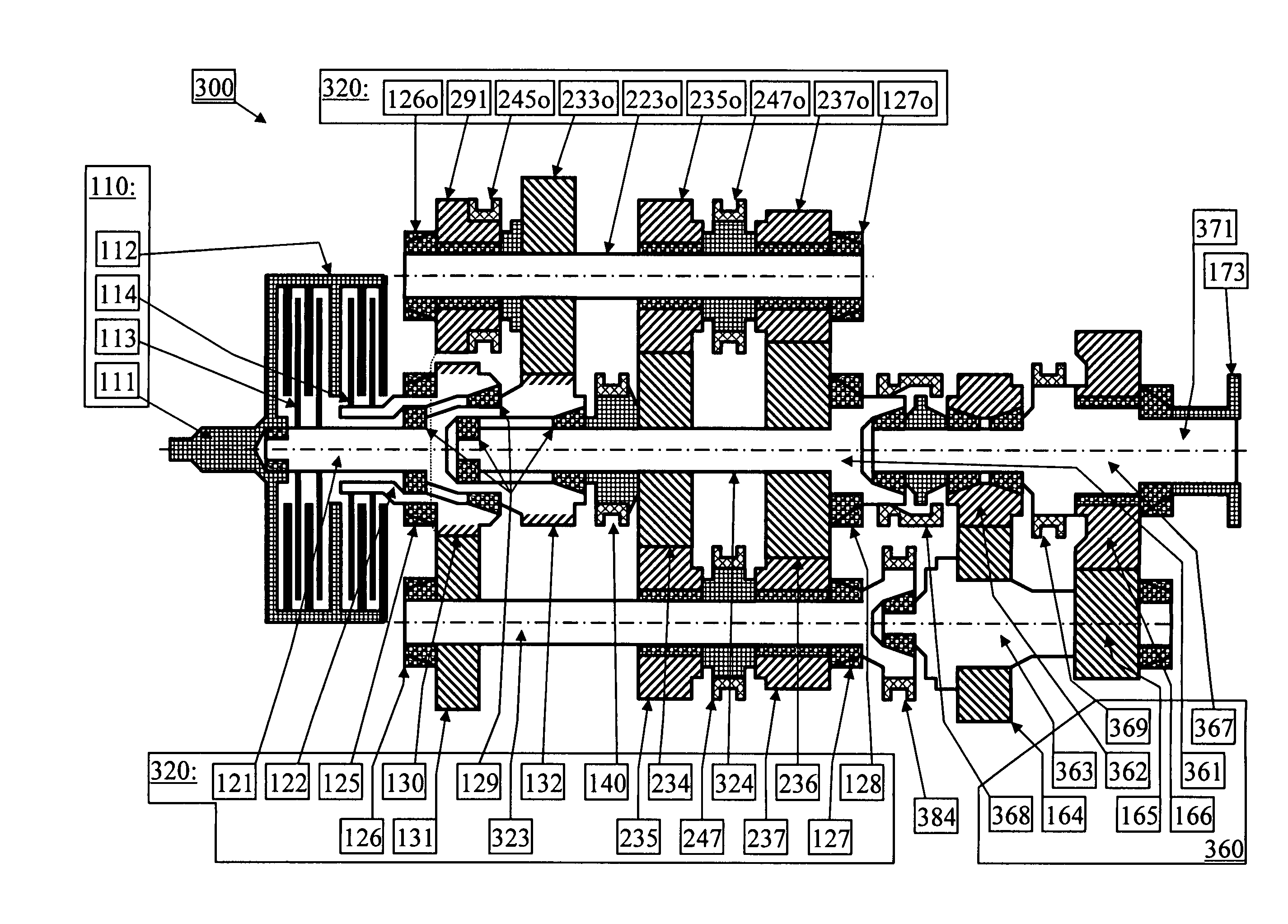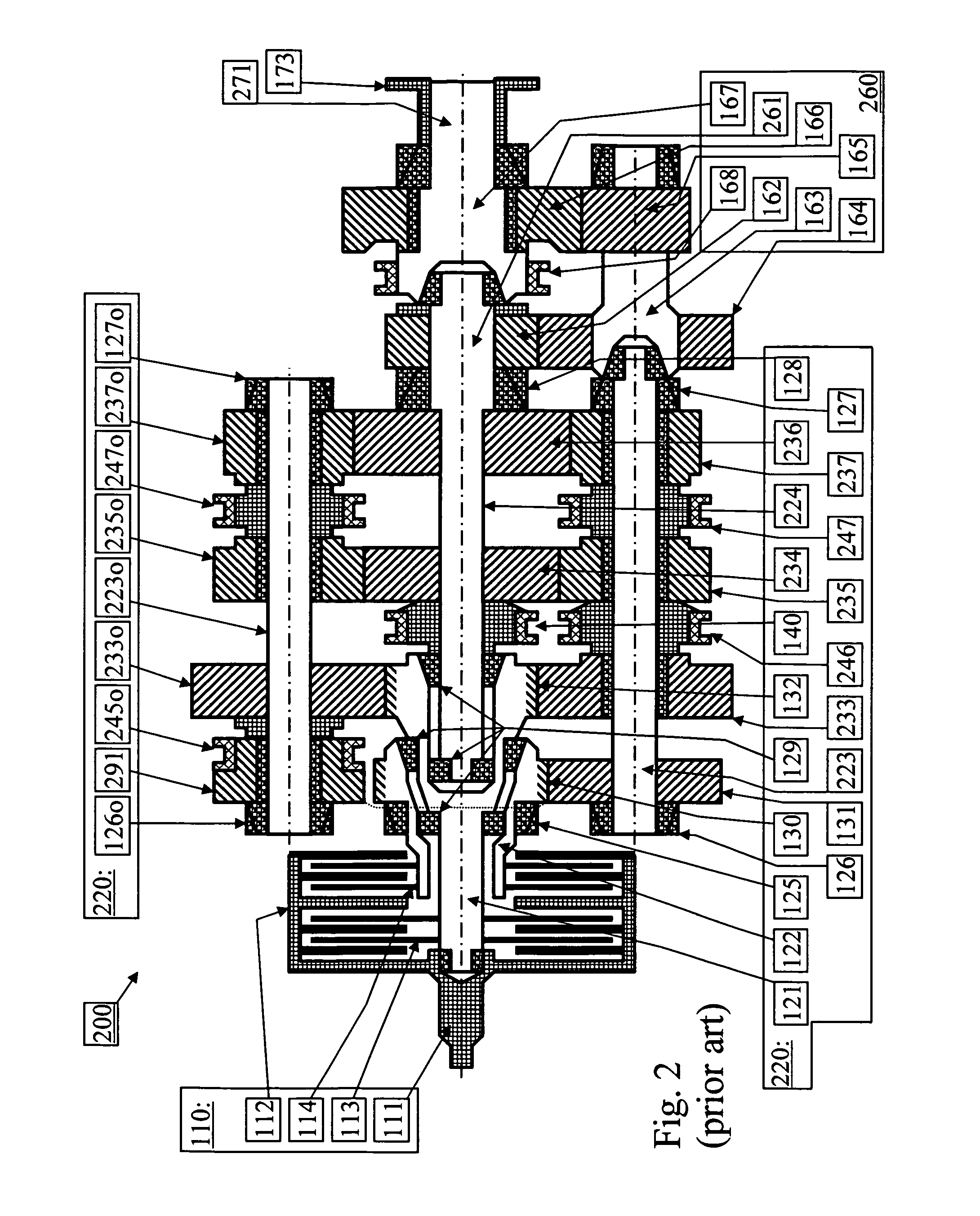Multi-clutch transmission for a motor vehicle
- Summary
- Abstract
- Description
- Claims
- Application Information
AI Technical Summary
Benefits of technology
Problems solved by technology
Method used
Image
Examples
Embodiment Construction
[0028]FIG. 1 shows schematically a longitudinal section the rotating parts of a transmission 100 for a heavy vehicle. The transmission 100 is composed of a dual frictional clutch unit 110, a main transmission 120 of dual clutch transmission type, and a range section 160 of non-planetary type. The dual frictional clutch unit 110 comprises a clutch input shaft 111 driven by an engine crankshaft (not shown), a clutch assembly 132 connected thereto, featuring first and second sub-clutches 113, 114, and an actuator device (not shown) to control the clutch unit.
[0029]The main transmission 120 has two input shafts; a first input shaft 121 and a second input shaft 122. The first input shaft 121 can be rotationally driven by the first sub-clutch 113. Similarly, the second input shaft 122 can be rotationally driven by the second sub-clutch 114.
[0030]A first primary gearwheel 132 is rotationally fixed or integral with the first input shaft 121. A second primary gearwheel 130 is rotationally fi...
PUM
 Login to View More
Login to View More Abstract
Description
Claims
Application Information
 Login to View More
Login to View More - R&D
- Intellectual Property
- Life Sciences
- Materials
- Tech Scout
- Unparalleled Data Quality
- Higher Quality Content
- 60% Fewer Hallucinations
Browse by: Latest US Patents, China's latest patents, Technical Efficacy Thesaurus, Application Domain, Technology Topic, Popular Technical Reports.
© 2025 PatSnap. All rights reserved.Legal|Privacy policy|Modern Slavery Act Transparency Statement|Sitemap|About US| Contact US: help@patsnap.com



